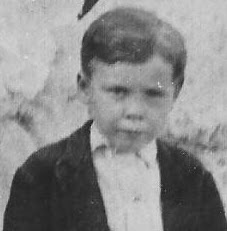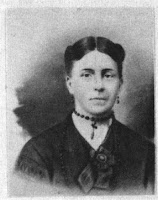I have previously written about one of my sixth great grandfathers, James Little. James came to America at the age of thirteen on the ship “The George and Ann” from Ireland. He had quite an adventure when the captain decided to extend the voyage by trickery causing the immigrants and crew to starve because of short rations. See “The Hunger Ship”.
In this story I am going to tell about another James Little and his brother, John. These brothers were the sons of the James Little, the immigrant, who came on the “George and Ann”. They were my fifth Great Grand Uncles. John was born in 1751, and his brother James was born in 1753, in what is now Orange County, New York in or near the village of Goshen. They grew up in a turbulent time, when the colonists were straining to break away from their British masters. John was 24 and James was 22 years old in 1775 and fierce patriots. It should be remembered that their parents left Ireland because of religious principles imposed upon them by the British. With the Battle of Bunker Hill and the first shots fired in what was to become the American Revolutionary War, the Little family responded by enlisting in the local militia which had been formed by a Colonel Allison. John was a captain and James was a private. There is a third Little named Samuel who was in this same regiment but I am not sure of his relationship. All three were killed in the battle at Minisink Ford.
About forty five miles from Goshen was the hamlet of Minisink Ford. "Minisink" once referred to a vast area stretching all the way from Minisink Ford to the Delaware Water Gap. Today the Town of Minisink is located about thirty miles southwest of Minisink Ford. The area is composed of hills and rocky terrain. But with just over two decades of settlement, the Upper Delaware was frontier country in 1779, connected with the outside world only by walking trails and stream courses.
The British attempted to divert American attention by renewing ties with former allies among the tribes of the still-powerful Iroquois Confederation. A series of raids on outlying American communities was begun as a harassing action. A Mohawk chief, Thayendanega, was the brother-in-law of former British Indian Commissioner Sir William Johnson. Thayendanega, also known as Joseph Brant, or Brandt, was well educated and traveled. He once spoke before the British Parliament. He was a principal leader in the tribe.
 After hotly deliberating the merits of engaging the marauders in combat, Tusten and 149 men – merchants, farmers and clerks, and what historian,James Eldridge Quinlan later described as "some of the principal gentlemen of the county" – set out the next day in pursuit of their quarry.
After hotly deliberating the merits of engaging the marauders in combat, Tusten and 149 men – merchants, farmers and clerks, and what historian,James Eldridge Quinlan later described as "some of the principal gentlemen of the county" – set out the next day in pursuit of their quarry.There is little detail, but what is known is that a party of more than 100 militia pursued the Mohawk chief up into the wilds of the Upper Delaware. The militia caught up at present day Minisink Ford, where a botched ambush split the militia forces. Ammunition was soon depleted, and the combat was reduced to hand-to-hand, with the Mohawks and Tories getting much the better of it. The militia was routed, and nearly all of those who stayed and fought were killed.
 The remains of those slain on that desolate hilltop in what forever after would be known as the Battle of Minisink were not afforded a proper burial. Quinlan wrote that "for 43 years the bones of those who had been slain on the banks of the Delaware were permitted to molder on the battle ground. But one attempt had been made to gather them, and that was by the widows of the slaughtered men, of whom there were 33 in the Presbyterian congregation of Goshen. They set out for the place of battle on horseback, but finding the journey too hazardous, they hired a man to perform the pious duty, who proved unfaithful and never returned."
The remains of those slain on that desolate hilltop in what forever after would be known as the Battle of Minisink were not afforded a proper burial. Quinlan wrote that "for 43 years the bones of those who had been slain on the banks of the Delaware were permitted to molder on the battle ground. But one attempt had been made to gather them, and that was by the widows of the slaughtered men, of whom there were 33 in the Presbyterian congregation of Goshen. They set out for the place of battle on horseback, but finding the journey too hazardous, they hired a man to perform the pious duty, who proved unfaithful and never returned."Finally, in 1822, "a committee was appointed to collect the remains and to ascertain the names of the fallen. The committee proceeded to the battle ground, a distance of 46 miles from Goshen, and viewed some of the frightful elevations and descents over which the militia had passed when pursuing the red marauders. The place where the conflict occurred, and the region for several miles around, were carefully examined and the relics of the honored dead gathered with pious care. The remains were taken to Goshen, where they were buried in the presence of 15,000 persons."
A monument was erected to mark the mass grave, upon which was inscribed the names of the 44 men killed in the battle.













































